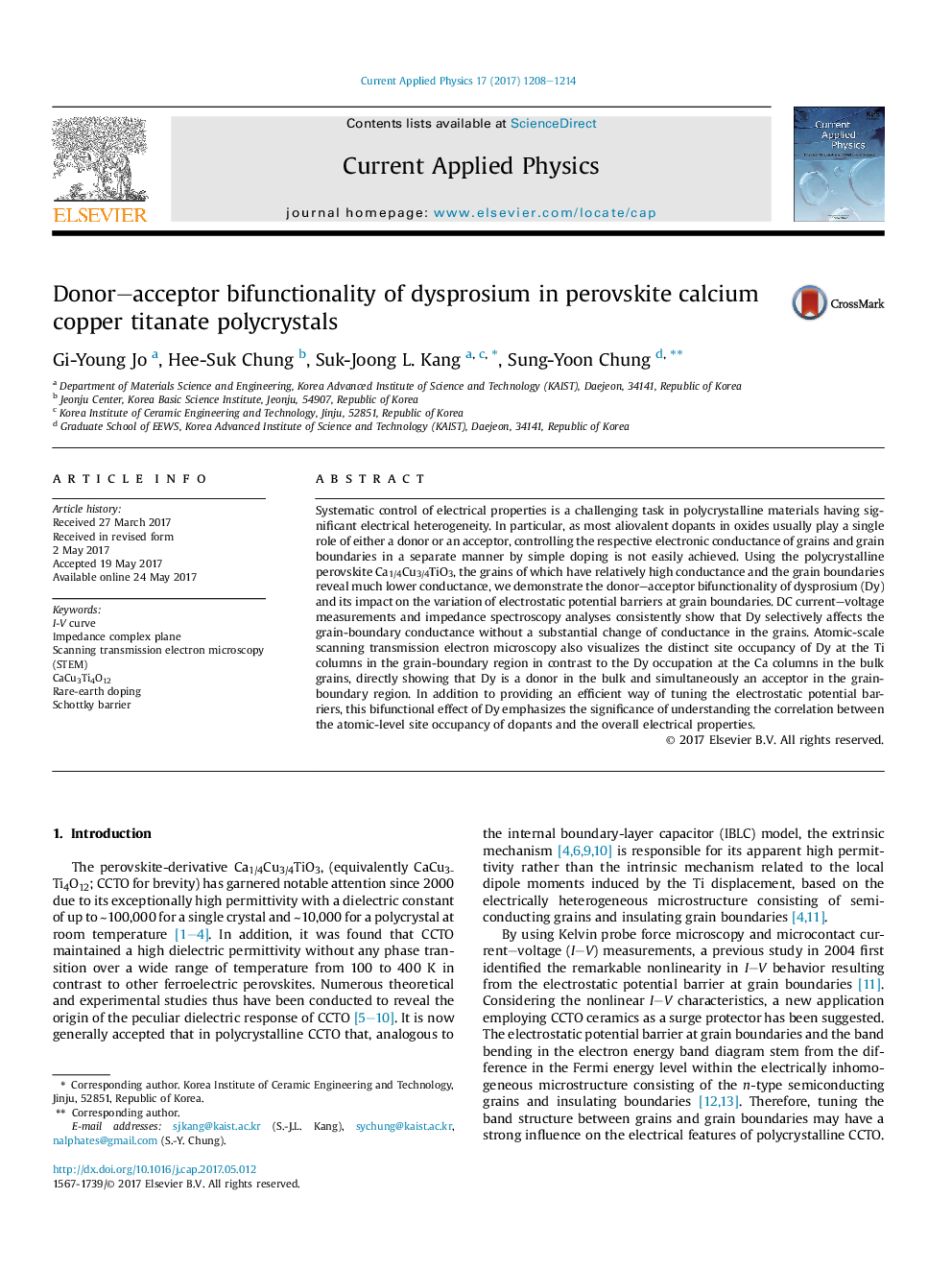| Article ID | Journal | Published Year | Pages | File Type |
|---|---|---|---|---|
| 5488744 | Current Applied Physics | 2017 | 7 Pages |
Abstract
Systematic control of electrical properties is a challenging task in polycrystalline materials having significant electrical heterogeneity. In particular, as most aliovalent dopants in oxides usually play a single role of either a donor or an acceptor, controlling the respective electronic conductance of grains and grain boundaries in a separate manner by simple doping is not easily achieved. Using the polycrystalline perovskite Ca1/4Cu3/4TiO3, the grains of which have relatively high conductance and the grain boundaries reveal much lower conductance, we demonstrate the donor-acceptor bifunctionality of dysprosium (Dy) and its impact on the variation of electrostatic potential barriers at grain boundaries. DC current-voltage measurements and impedance spectroscopy analyses consistently show that Dy selectively affects the grain-boundary conductance without a substantial change of conductance in the grains. Atomic-scale scanning transmission electron microscopy also visualizes the distinct site occupancy of Dy at the Ti columns in the grain-boundary region in contrast to the Dy occupation at the Ca columns in the bulk grains, directly showing that Dy is a donor in the bulk and simultaneously an acceptor in the grain-boundary region. In addition to providing an efficient way of tuning the electrostatic potential barriers, this bifunctional effect of Dy emphasizes the significance of understanding the correlation between the atomic-level site occupancy of dopants and the overall electrical properties.
Keywords
Related Topics
Physical Sciences and Engineering
Physics and Astronomy
Condensed Matter Physics
Authors
Gi-Young Jo, Hee-Suk Chung, Suk-Joong L. Kang, Sung-Yoon Chung,
